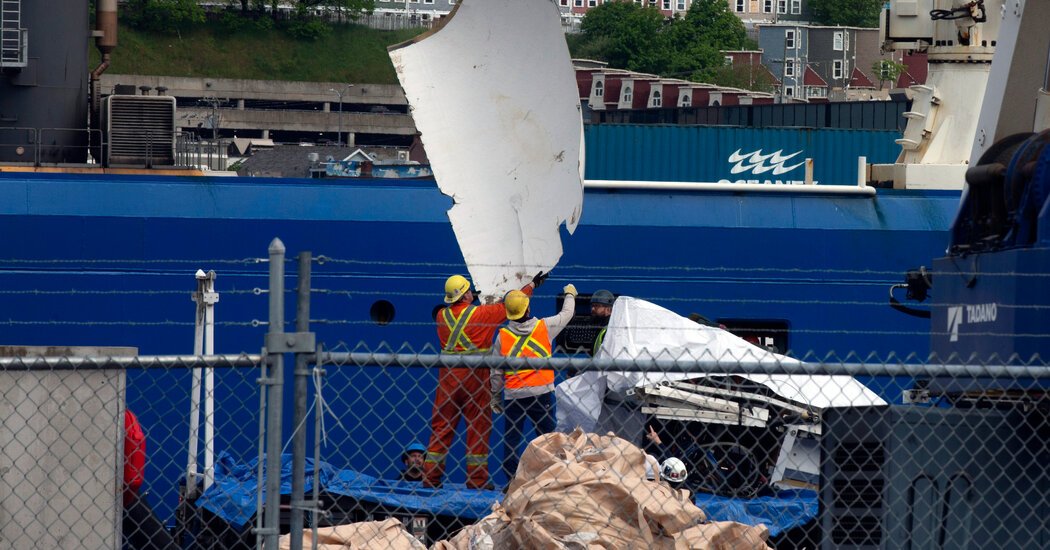The Latest
Debris and presumed human remains from the Titan submersible have been recovered and returned to land, the U.S. Coast Guard announced Wednesday night, nearly a week after an international search-and-rescue operation ended and the vessel’s five passengers were presumed dead.
At a Canadian Coast Guard pier in St. John’s, Newfoundland, on Wednesday, crews unloaded what appeared to be the Titan’s 22-foot hull, crinkled and twisted with exposed wires and cables. Images from The Canadian Press showed what looked to be a piece of the hull’s siding and other debris being unloaded from the Horizon Arctic, a vessel that had deployed a remotely operated vehicle to search the ocean floor for the submersible.
The debris will be taken to a U.S. port where the Marine Board of Investigation will do further analysis and testing. United States medical professionals “will conduct a formal analysis of presumed human remains that have been carefully recovered within the wreckage at the site of the incident,” the Coast Guard said in a statement.
In a statement, Pelagic Research Services, which led the deep sea recovery effort, said it had “successfully completed offshore operations” and was in the process of demobilization, which marks the end of a mission and a return to the base of operations. The company would not confirm that the debris belonged to the Titan, saying that the investigation was continuing, and referred questions to the U.S. Coast Guard, which did not immediately return a request for comment.
A crew has been “working around the clock now for 10 days, through the physical and mental challenges of this operation, and are anxious to finish the mission and return to their loved ones,” Pelagic Research Services said in its statement.
Why It Matters: Debris could lead to clues
J. Carl Hartsfield, an underwater vehicle designer at the Woods Hole Oceanographic Institution, said that recovered debris could contain vital information about what exactly had happened to the Titan. Mr. Hartsfield said investigators would be looking for three things: a point of failure of the hull, how pieces of carbon fiber and titanium, the submersible’s materials, were connected; and if any electronic data was recoverable.
But it will not be as simple as examining a black box, as investigators do in plane or train crashes. Mr. Hartsfield said he believed it was “highly unlikely” that the submersible had a central data recorder for a disaster. But, he said, data is recorded in different places — hard drives, sonar footage and even possibly cameras — that could help investigators begin to paint a story of what had happened.
The U.S. Coast Guard is leading the investigation into why the submersible imploded and has convened a marine board of investigation, the highest level of investigation in the Coast Guard. The board is working closely with other national and international agencies that responded to the event including authorities from Canada, the United Kingdom and France. There is no timeline for the investigation.
Mr. Hartsfield, who was consulted during the search but was not part of the recovery efforts, said an investigation could take anywhere from 18 to 24 months.
“It seems like a long time but there’s a lot to do,” he said.
Background: A ‘catastrophic implosion’
Almost two weeks ago, five people set off in a submersible vessel to see the remains of the Titanic 12,500 feet under the sea. But not even two hours into the dive, the craft lost communications.
A few days later, debris from the vessel was found on the ocean floor, including the Titan’s tail cone and other pieces, about 1,600 feet from the bow of the Titanic wreck. The discovery suggested a “catastrophic implosion” with no survivors, according to the U.S. Coast Guard.
The victims included the founder of the company that operated it, a British business man and explorer who held several Guinness World Records, a father and son from a prominent Pakistani family and a French maritime expert.
Eduardo Medina contributed reporting.





